
















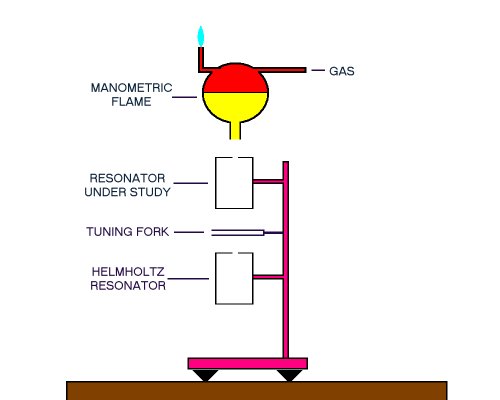 This would have enabled him to study the sound phenomenon occurring inside the resonator with as little interference as possible.
That would not have held his attention for long.
As the next experiment he would have tried to investigate more complex sounds, such as a harmonic chord and study the effects of that on the body under investigation.
The only way he could achieve this was by mounting three resonating bodies in front of the first cavity resonator in place of the tuning fork.
This required re-designing his device. He acquired a ring of metal, carefully tuned it to a compatible frequency with the three resonators so mounted inside, them being a tuning fork, a tonometer bar and a Chladni plate, mounted his cavity resonator on the top, put it onto a suitably tuned vertical stand and now he could produce a complex waveform inside another cavity resonator induced by resonance and observe the waveform inside that resonator by placing a manometric flame above it.
His vibrating transmitter was born.
Fanciful speculation, I hear many of you say at this point.
NOT AT ALL!
The device existed, maybe still exists. There are a few photographs of it though no-one I know of has ever mentioned its purpose.
He refers to it in his writings as the 'vibrating transmitter with the telephonic head'.
The description is an allusion to the shape of the resonator mounted on top of the ring, which bears a resemblance to an earpiece of a contemporary telephone.
Why he chose a conical resonator for this device is unclear to me, maybe by giving it the shape of a megaphone he tried to amplify it's output.
Later, when he had learned to produce the wave patterns he needed inside a resonator cavity he discarded the shape in favour of a spherical arrangement.
But, no more talk, here it is.
This would have enabled him to study the sound phenomenon occurring inside the resonator with as little interference as possible.
That would not have held his attention for long.
As the next experiment he would have tried to investigate more complex sounds, such as a harmonic chord and study the effects of that on the body under investigation.
The only way he could achieve this was by mounting three resonating bodies in front of the first cavity resonator in place of the tuning fork.
This required re-designing his device. He acquired a ring of metal, carefully tuned it to a compatible frequency with the three resonators so mounted inside, them being a tuning fork, a tonometer bar and a Chladni plate, mounted his cavity resonator on the top, put it onto a suitably tuned vertical stand and now he could produce a complex waveform inside another cavity resonator induced by resonance and observe the waveform inside that resonator by placing a manometric flame above it.
His vibrating transmitter was born.
Fanciful speculation, I hear many of you say at this point.
NOT AT ALL!
The device existed, maybe still exists. There are a few photographs of it though no-one I know of has ever mentioned its purpose.
He refers to it in his writings as the 'vibrating transmitter with the telephonic head'.
The description is an allusion to the shape of the resonator mounted on top of the ring, which bears a resemblance to an earpiece of a contemporary telephone.
Why he chose a conical resonator for this device is unclear to me, maybe by giving it the shape of a megaphone he tried to amplify it's output.
Later, when he had learned to produce the wave patterns he needed inside a resonator cavity he discarded the shape in favour of a spherical arrangement.
But, no more talk, here it is.
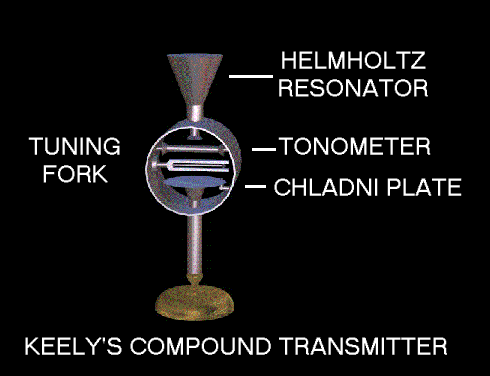
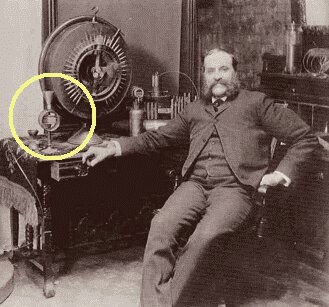
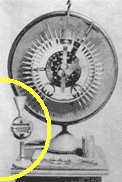
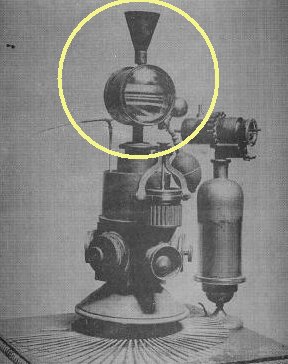
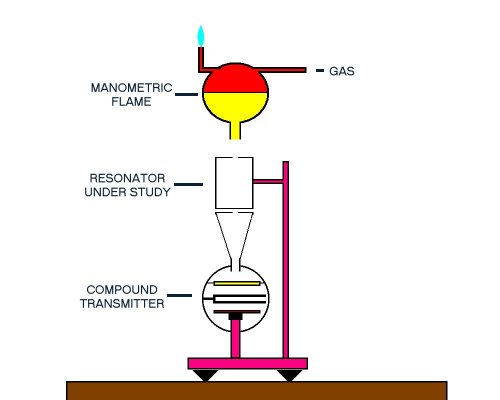 Now he is looking at complex waveforms inside a resonator. So, what? And how does water get into the equation?
This question puzzled me for some time until I remembered something from when I was a boy.
Toys and musical instruments were scarce in early post-war Germany. I loved both. An old man told me that if I collected a few bottles he would make me a musical toy. When I had a number of bottles he suspended them on strings from a broom handle resting horizontally on two timber forks cut from a tree branch and staked vertically in the ground. He then filled the bottles with various levels of water and bingo a sort of xylophone. The bottles when struck with a hammer made different notes and it was possible to play simple tunes on the thing. As the water evaporated they would get out of tune and required retuning by adding a bit more to various bottles. The process of tuning was so tedious I soon tired of the device and did something else.
Of course, that was it!
Keely would have done just that to study the patterns caused by minor changes in pitch.
For his purpose an eyedropper would have been ideal. We know from his later experiments and writings that he never used more than a few drops of water at a time. I don't know how many times he made his experiments. Judging by his tenacity in pursuing failed experiments until they paid off, as commented upon by many of his contemporaries, perhaps a thousand times or more.
Eventually he struck the right combination. The water dissociated into H2 O2, a highly explosive gas, the manometric flame at the top ignited it and BOOM, his first taste of "etheric vapour".
After that there was no stopping him. I don't think he knew for quite some time what he had done, but of one thing he was convinced. He had 'liberated' an enormous amount of energy using sound.
Now he is looking at complex waveforms inside a resonator. So, what? And how does water get into the equation?
This question puzzled me for some time until I remembered something from when I was a boy.
Toys and musical instruments were scarce in early post-war Germany. I loved both. An old man told me that if I collected a few bottles he would make me a musical toy. When I had a number of bottles he suspended them on strings from a broom handle resting horizontally on two timber forks cut from a tree branch and staked vertically in the ground. He then filled the bottles with various levels of water and bingo a sort of xylophone. The bottles when struck with a hammer made different notes and it was possible to play simple tunes on the thing. As the water evaporated they would get out of tune and required retuning by adding a bit more to various bottles. The process of tuning was so tedious I soon tired of the device and did something else.
Of course, that was it!
Keely would have done just that to study the patterns caused by minor changes in pitch.
For his purpose an eyedropper would have been ideal. We know from his later experiments and writings that he never used more than a few drops of water at a time. I don't know how many times he made his experiments. Judging by his tenacity in pursuing failed experiments until they paid off, as commented upon by many of his contemporaries, perhaps a thousand times or more.
Eventually he struck the right combination. The water dissociated into H2 O2, a highly explosive gas, the manometric flame at the top ignited it and BOOM, his first taste of "etheric vapour".
After that there was no stopping him. I don't think he knew for quite some time what he had done, but of one thing he was convinced. He had 'liberated' an enormous amount of energy using sound.
Next Chapter:
AQUAEOUS DISINTEGRATION.
Contact:
Hans von Lieven, copyright 2007